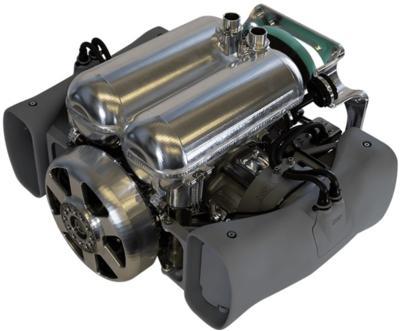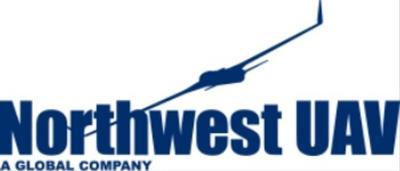Emergent Powerplant Elevated to TRL-7
Northwest UAV’s newest heavy-fuel UAV engine, the NW-230, has made its first successful in-field flight. The sortie saw a Hybrid Vertical Take-Off and Landing (HVTOL) aircraft operated by an undisclosed Northwest UAV customer attain sustained, unaided flight. Moreover, the successful flight facilitated the elevation of the NW-230 engine system to a Technology Readiness Level (TRL) of seven for flying in an operational environment under end-user mission control.

Spanning a range of one through nine, Technology Readiness Levels are a metric by which the maturity of emergent technologies are quantified. By way of example, TRL-One connotes a nascent technology undergoing continuing research and development. Such a technology is considered TRL-Two once its basic principles have been studied and practical applications thereof have been devised. TRL-Two technologies remain eminently speculative as proof of their inherent concepts has yet to be established.
Conversely, TRL-Six technologies are instantiated by fully functional prototypes or representational models. TRL-Seven technologies have demonstrated function within their projected spheres of application—after the fashion of the successful flight recently accomplished by Northwest UAV’s NW-230 engine. Finally, TRL-Nine technologies are proven by means of repeated successful application within their design environments.

From humble beginnings in an Oregon garage, Northwest UAV (NWUAV) has evolved into a premier provider of propulsion systems for the unmanned vehicle industry. The company’s expertise and products span heavy-fuel propulsion; hydrogen fuel cell power; Engine Control Units (ECU), ignition and fuel-injection systems; servo actuators; sense-and-avoid technology; engine diagnostic and test equipment; Unmanned Aerial Vehicle (UAV) propulsion and payload engineering; and flight-testing in the company’s FAA certified airspace.
After over 15 years of steadily developing and delivering over 18,000 engines, and over one-million flight-hours, NWUAV continues to drive the unmanned systems industry into an era of unprecedented growth, fantastic possibility, and burgeoning infrastructural relevance.
On 3 October 2022, Northwest UAV completed initial testing of the NW-230 twin-cylinder, multi-fuel, UAV engine. The powerplant derives of technologies pioneered in its NW-44 and NW-88 progenitors, and is designed to offer endurance and reliability to Group III UAVs—a class of large unmanned air vehicles, the payloads and performance of which are conducive to both commercial and military purposes.

The entirety of NWUAV’s systems are designed to operate on various heavy fuels or gasoline in a broad variety of climates. The powerplants’ patented temperature control system and cylinder design ensure reliable engine operation through a wide temperature range (-30°C to +55°C) while operating on heavy fuels. What’s more, NWUAV’s engineers have resolutely striven to ensure the propulsion systems they design are straightforward and easy to maintain both in-shop and afield.
Initial operational capability orders for NW-230 engine systems are being issued with deliveries slated for 2024’s first-quarter.
 ANN's Daily Aero-Linx (12.03.25)
ANN's Daily Aero-Linx (12.03.25) ANN's Daily Aero-Term (12.03.25): CrewMember (UAS)
ANN's Daily Aero-Term (12.03.25): CrewMember (UAS) NTSB Prelim: Maule M-7-235A
NTSB Prelim: Maule M-7-235A Airborne-Flight Training 12.04.25: Ldg Fee Danger, Av Mental Health, PC-7 MKX
Airborne-Flight Training 12.04.25: Ldg Fee Danger, Av Mental Health, PC-7 MKX Aero-News: Quote of the Day (12.04.25)
Aero-News: Quote of the Day (12.04.25)





